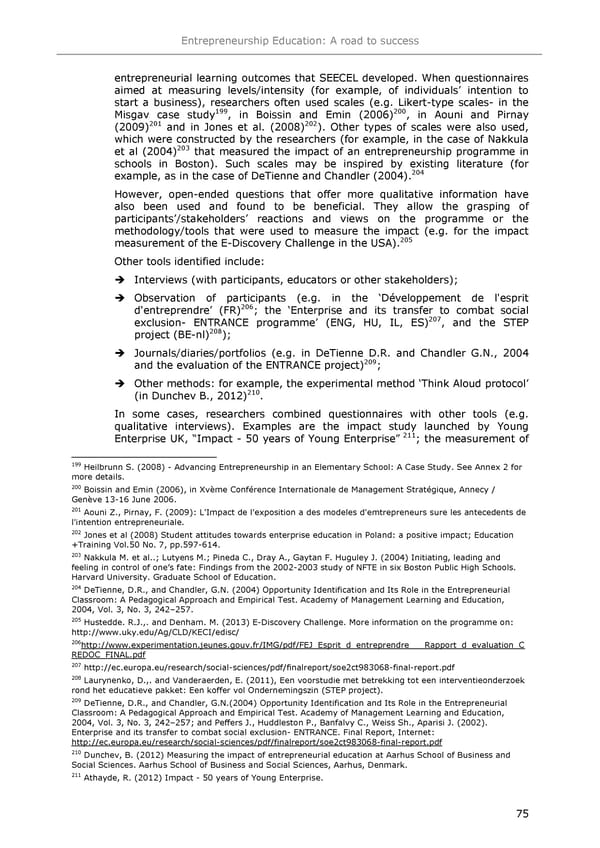Entrepreneurship Education: A road to success entrepreneurial learning outcomes that SEECEL developed. When questionnaires aimed at measuring levels/intensity (for example, of individuals9 intention to start a business), researchers often used scales (e.g. Likert-type scales- in the 199 200 Misgav case study , in Boissin and Emin (2006) , in Aouni and Pirnay 201 202 (2009) and in Jones et al. (2008) ). Other types of scales were also used, which were constructed by the researchers (for example, in the case of Nakkula et al (2004)203 that measured the impact of an entrepreneurship programme in schools in Boston). Such scales may be inspired by existing literature (for 204 example, as in the case of DeTienne and Chandler (2004). However, open-ended questions that offer more qualitative information have also been used and found to be beneficial. They allow the grasping of participants9/stakeholders9 reactions and views on the programme or the methodology/tools that were used to measure the impact (e.g. for the impact 205 measurement of the E-Discovery Challenge in the USA). Other tools identified include: Interviews (with participants, educators or other stakeholders); Observation of participants (e.g. in the 8Développement de l'esprit 206 d'entreprendre9 (FR) ; the 8Enterprise and its transfer to combat social 207 exclusion- ENTRANCE programme9 (ENG, HU, IL, ES) , and the STEP 208 project (BE-nl) ); Journals/diaries/portfolios (e.g. in DeTienne D.R. and Chandler G.N., 2004 209 and the evaluation of the ENTRANCE project) ; Other methods: for example, the experimental method 8Think Aloud protocol9 210 (in Dunchev B., 2012) . In some cases, researchers combined questionnaires with other tools (e.g. qualitative interviews). Examples are the impact study launched by Young Enterprise UK,
 Entrepreneurship Education Page 78 Page 80
Entrepreneurship Education Page 78 Page 80